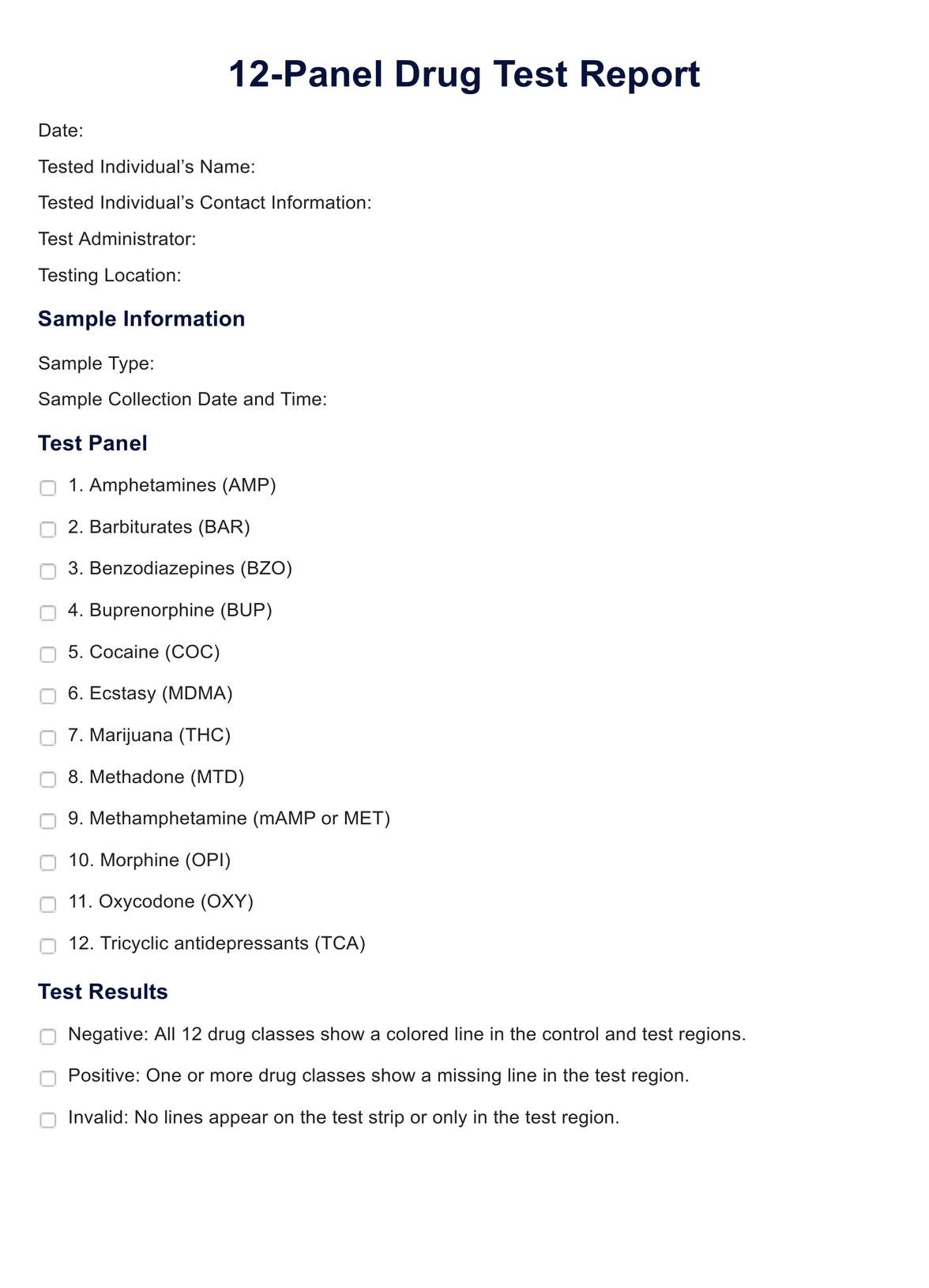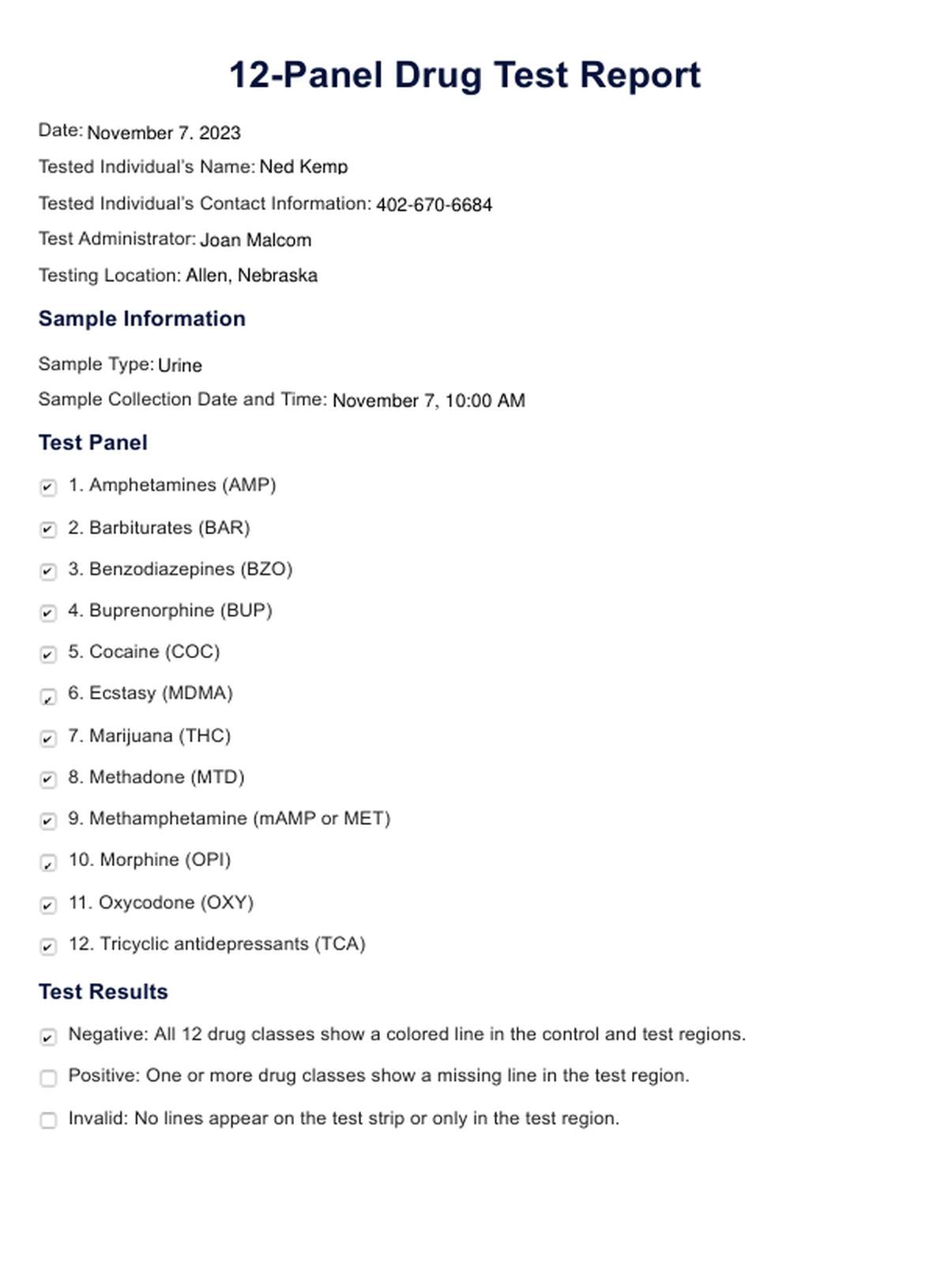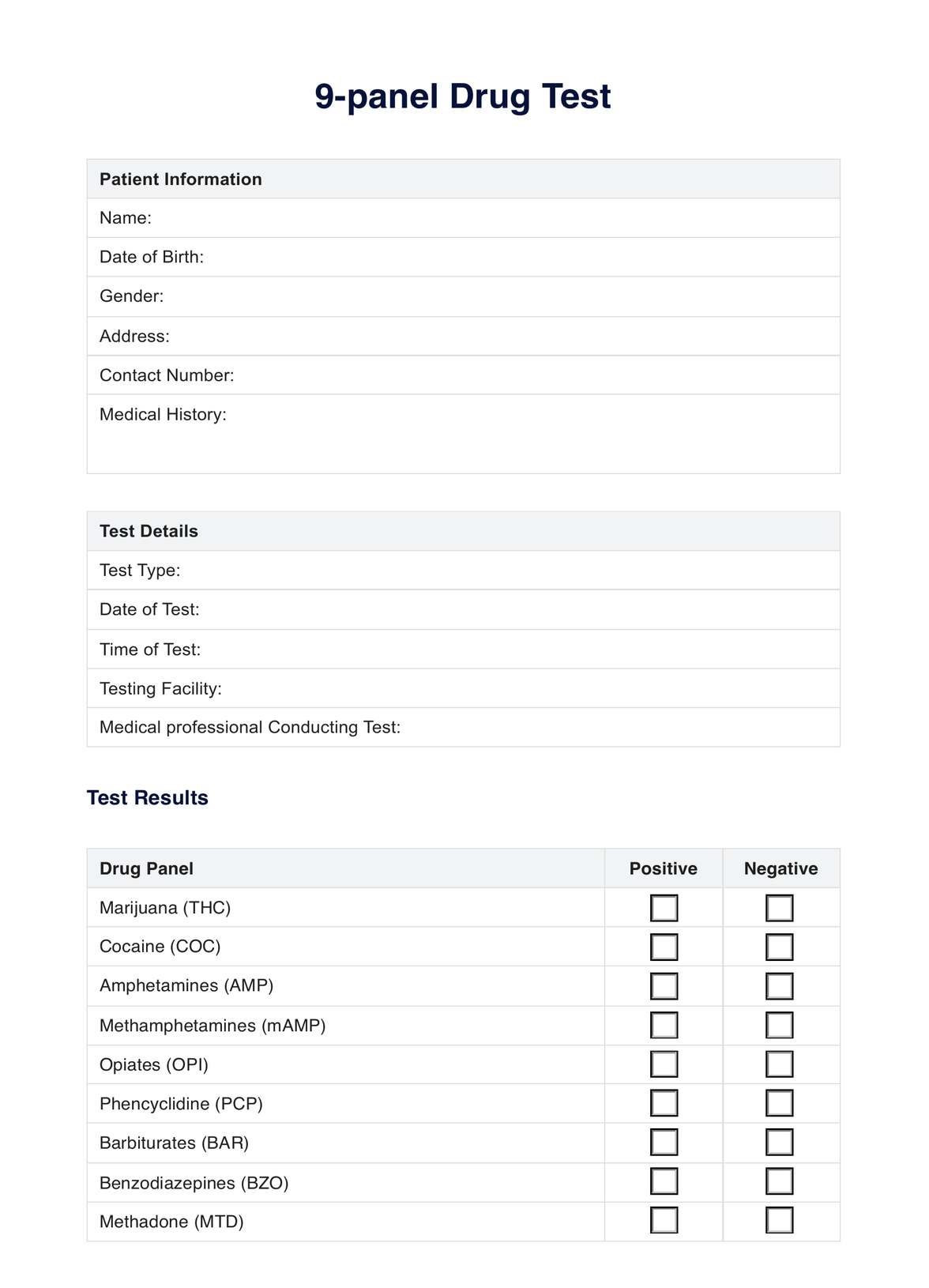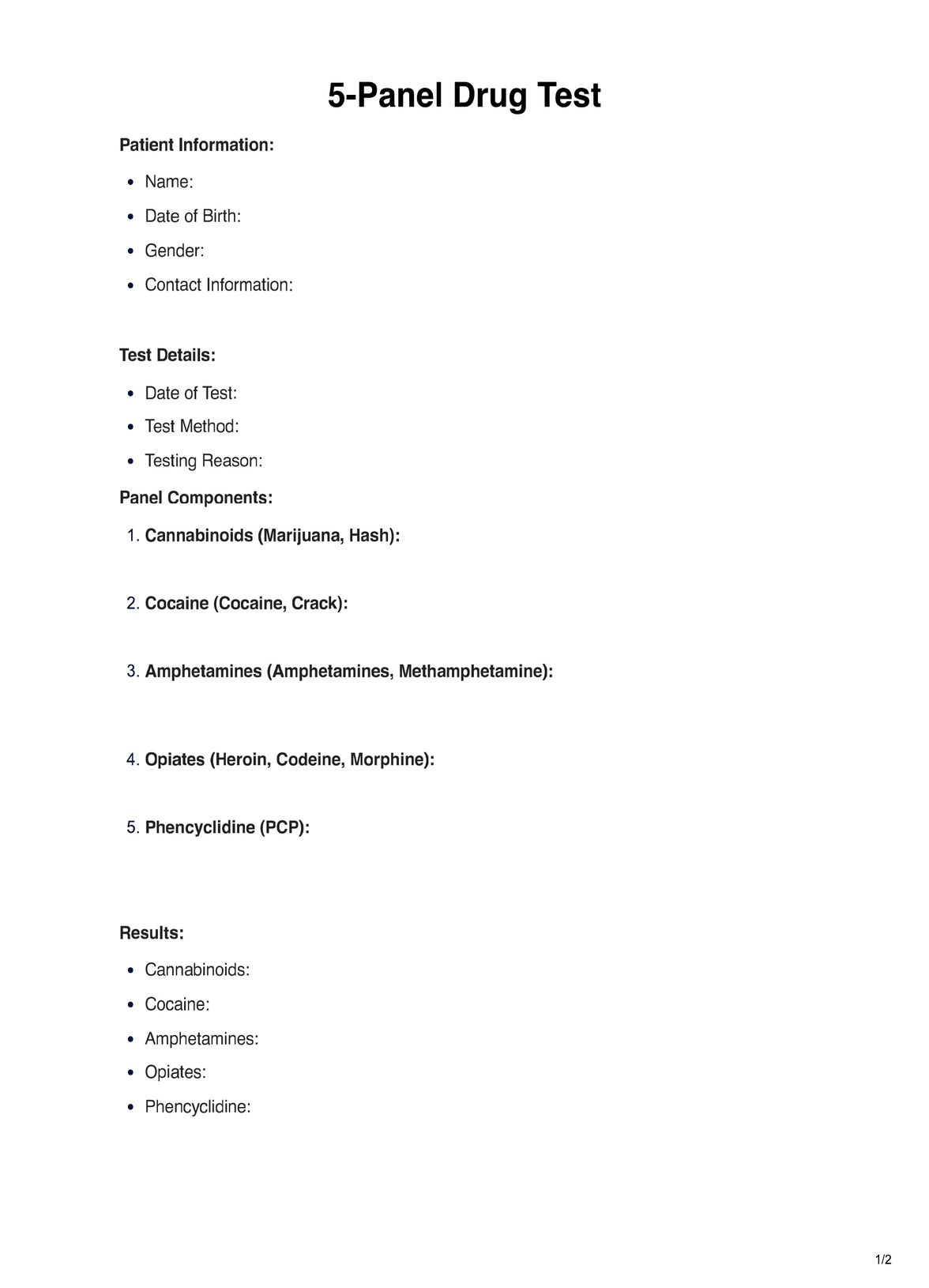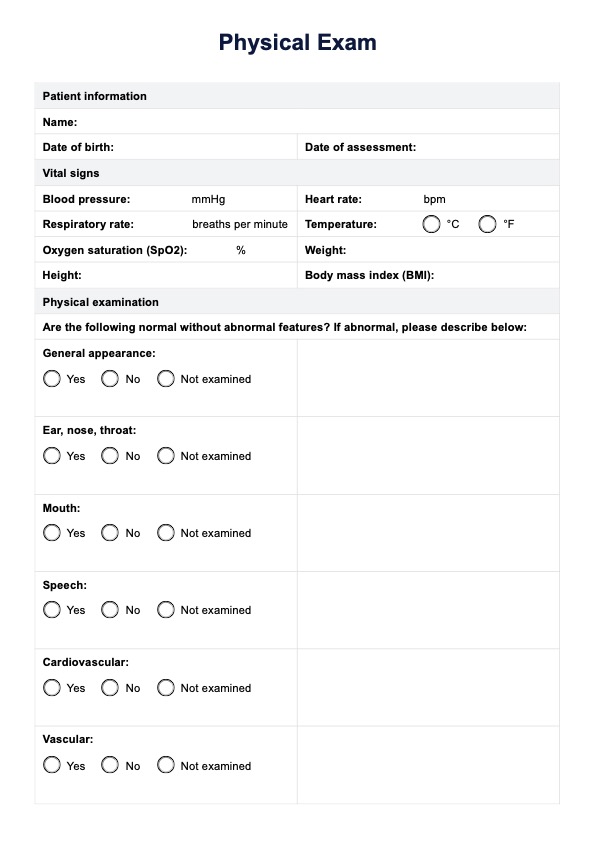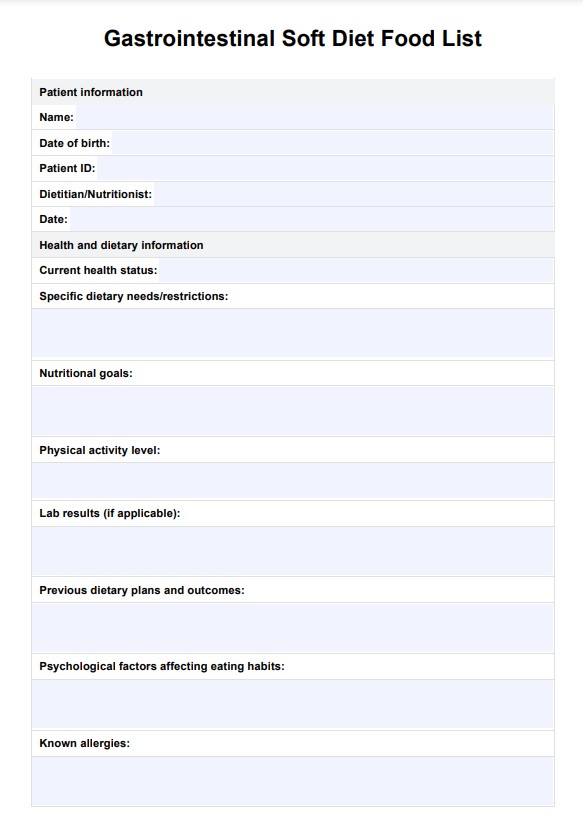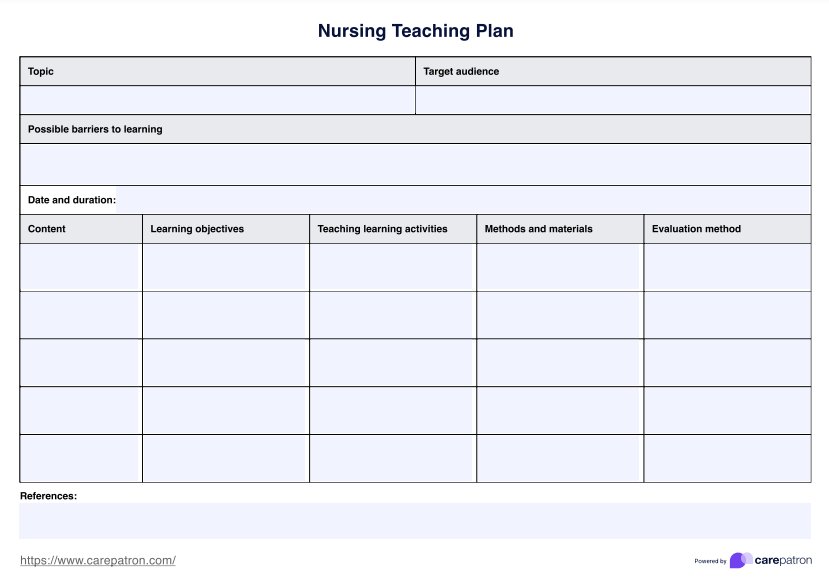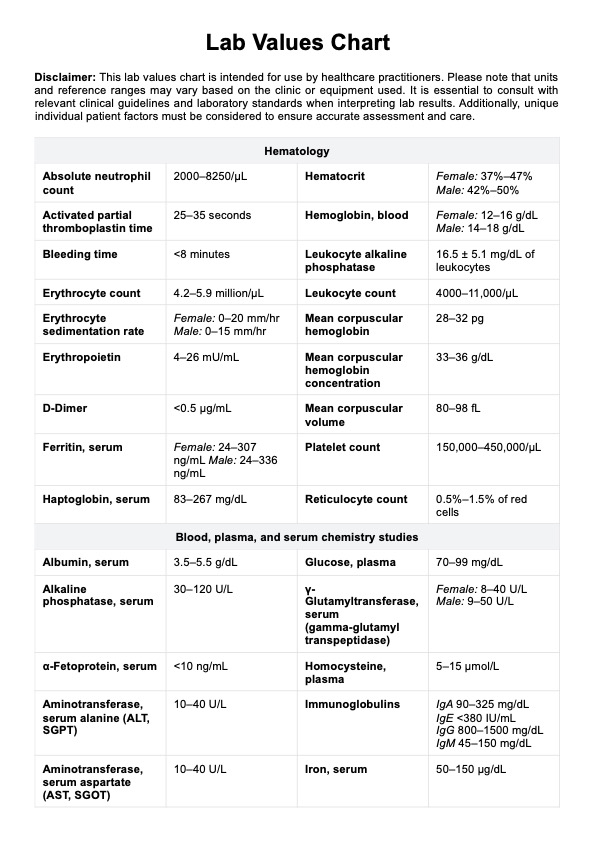12-panel drug Test
Explore the comprehensive guide to the 12-panel drug test. Learn how it works, when to use it, and what the results mean. Free PDF download available.


What Is a 12-Panel Drug Test?
A 12-panel drug test is a comprehensive method of drug screening designed to detect the presence of twelve specific drug classes in a person’s system. It serves as a vital tool to monitor and assess individuals for potential drug dependence or misuse. The test can be administered using various sample types. Examples are saliva, sweat, blood, hair follicles, and urine. Urine samples are the most commonly employed for rapid results.
Here’s a list of the 12 specific drug classes that a 12-panel drug test is capable of identifying:
- Amphetamines (AMP)
- Barbiturates (BAR)
- Benzodiazepines (BZO)
- Buprenorphine (BUP)
- Cocaine (COC)
- Ecstasy (MDMA)
- Marijuana (THC)
- Methadone (MTD)
- Methamphetamine (mAMP or MET)
- Morphine (OPI)
- Oxycodone (OXY)
- Tricyclic antidepressants (TCA)
Typically, 12-panel drug tests are frequently employed in a variety of settings like reinstatement of driver’s licenses, employment screening, patient intervention, and monitoring potential substance abuse within their families. The one requesting the test may request that the tester have it conducted at a laboratory or any other place convenient for them, given that currently, home kits exist.
Currently, the test results can be sufficient records of proof whether or not one takes said drugs. However, if you need a document to record the results for future reference, you can utilize templates such as our 12-panel drug test template.
12-panel drug Test Template
12-panel drug Test Example
How Does It Work?
Step One: Access the Printable 12-Panel Drug Test Template
In cases where a 12-panel drug test is requested, acquiring a digital and printable template is the first step. You can obtain the template by following these methods:
- Click the "Download Template" or "Use Template" button.
- Utilize Carepatron's template library search feature on the website or app to find the "12 Panel Drug Test" template.
Step Two: Initiate a Request
Creating a request using the 12-panel drug test template becomes a swift process. Once you've ascertained the necessity of the test based on your patient's interview, analysis, or physical examination, complete the designated request form with essential details.
If a non-medical professional requests a drug test, you may give them a copy of the template or fill out the request form on their behalf.
Step Three: Present the Form
If the test requester prefers that a laboratory is the one that processes the sample instead of buying a DIY kit, the patient must show the request to the laboratory technician in charge.
Step Four: Write Down Results and Interpret
Whether the sample was processed in a laboratory or using an at-home kit, you or the patient should write the test results with their corresponding interpretation on the template for proof to show the person who requested the test.
Step Five: Secure Template Storage
After the test results and their interpretation have served their purpose, it is essential to store the template for future reference securely. For those seeking a safe digital storage solution, Carepatron is a HIPAA-compliant, cost-free patient record software that safeguards patient records for easy retrieval.
When Would You Use This Test?
A 12-panel drug test is useful in various situations where detecting a wide range of substances is essential for safety, compliance, or medical reasons. Here are some scenarios in which one may need to use or request a 12-panel drug test:
Employment Drug Testing
Employers frequently require employees or job applicants to undergo 12-panel drug testing, especially in safety-sensitive roles or positions that involve public interaction. This is done to ensure a safe and drug-free workplace, where impairment due to drug use could pose significant risks to the employee, their colleagues, or the public.
Legal Drug Testing
In cases of probation or court-ordered drug testing, the legal system often mandates 12-panel drug tests. These tests are conducted to monitor individuals involved in legal matters in order to ensure their compliance with drug abstinence requirements.
Drug Treatment Program Drug Testing
Individuals who are enrolled in drug treatment programs may undergo 12-panel drug testing as part of their rehabilitation and recovery process. This monitoring helps assess their progress and verify abstinence from illicit substances.
Healthcare Provider Drug Testing
Healthcare providers, including doctors and medical facilities, may request a 12-panel drug test as part of patient care. This is essential for situations where medication compliance or potential substance misuse needs to be monitored.
What Do the Results Mean?
The results of a 12-panel drug test which you can write on the template, are interpreted based on the presence or absence of colored bands on the test strips for home kits. Meanwhile, laboratories typically provide results labeled with a negative or positive.
Whether using one or the other, here are the following guidelines to help in understanding the meaning of these results:
Negative Result
For home kits, when a colored line appears in both the control (C) region and the test (T) region, the result is considered negative. This indicates that none of the drugs being tested for have been detected in the sample above the predetermined cutoff levels. In other words, the individual's system is free from the substances screened for or aren’t high enough in concentration to be detected.
Positive Result
Similar to the one above, a positive result is indicated in DIY drug test kits when a colored line is absent in the test (T) region. This means that one or more of the drugs within the panel are present in the sample above the defined cutoff levels. A positive result suggests recent or current drug use.
Invalid or Inconclusive Result
You can consider a result invalid or inconclusive if no lines appear on the test strip or when a line appears solely in the test (T) region without a corresponding line in the control (C) region. An invalid result implies that the test was not performed correctly or that there may be an issue with the test kit or the sample. In such cases, the test should be repeated.
It is important to be aware that the initial test results are considered presumptive, Should there be positive drug test results, confirmation is required through additional, more accurate testing methods. Furthermore, for accuracy’s sake, results should be read within the recommended timeframe (typically within 5 minutes) and should not be interpreted after the specified time has elapsed.
Research & Evidence
Here are several studies and articles that support the use of the 12-panel drug test:
- According to a study by Edmund Murphy, who is the content manager for Recovered, 12-panel drug tests offer a more comprehensive screening than 10-panel tests. Employers primarily use them to detect prescription opioids like oxycodone as well as party drugs like ecstasy and molly (MDMA).
- In connection with the point above, according to CannAmm’s website article, 12-panel drug testing can have useful applications for certain safety-sensitive positions compared to a 5-drug panel test as it provides additional screening for safety risks associated with medical drugs.
- An article on Zinnia Health’s website discusses the importance, accuracy, and uses of the 12-panel drug test. According to the article writer, drug tests are crucial tools for employers, sports bodies, and many other institutions to maintain safety and compliance.
- Meanwhile, a blog post on Halux Diagnostic’s website highlights the benefits of using a 12-panel drug test for employers. These benefits include reducing liability risks associated with having workers under the influence on company property or while performing job duties, providing early detection of any changes in employee behavior that could indicate substance abuse issues, ensuring compliance with government regulations related to workplace safety, and helping maintain an overall healthy work environment by discouraging illicit activities among staff members.
These are simply a few of the many studies and articles that provide evidence supporting the effectiveness and importance of the 12-panel drug test in various settings.
References
12-Panel drug test. (2023, May 2). Recovered. https://recovered.org/drug-tests/12-panel-drug-test
Howard, B. (2023, August 14). What Does a 12 Panel Drug Test Test For? Get the Facts! Halux Diagnostic. https://haluxdiagnostic.com/blog/what-does-a-12-panel-drug-test-test-for/
Lawrysyn, K. (2022, November 17). 5 Panel Drug Tests vs. 12 Panel: What Are The Differences and Which Do You Need? CannAmm Occupational Testing Services. https://www.cannamm.com/blog-and-opinions/5-panel-drug-tests-vs-12-panel-what-are-the-differences-and-which-do-you-need/
Zinnia Health. (2023, October 25). What Does the 12-Panel Drug Test Screen For? All You Should Know | Zinnia Health. https://zinniahealth.com/substance-use/blog/12-panel-drug-test
Commonly asked questions
A 12-panel drug test is typically requested by employers, legal authorities, healthcare providers, sports organizations, schools, and parents.
The 12-panel drug tests are used when requested for employment, legal purposes, monitoring the patient during drug rehabilitation, or as part of routine patient care.
Results will depend on whether the patient utilized a home kit or had their sample processed at a laboratory. If it’s a home kit, it can take minutes. Meanwhile, if it’s a laboratory, it will take a few business days before the results are available.


